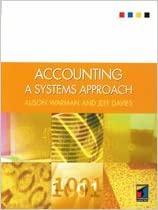The magnitude of the aerodynamic drag force Fd on a moving automobile can be modeled by the equation: Fa= 3pAdu? where p is the density of the surrounding air. A is the reference area of the automobile, and Cd is a dimensionless constant called the drag coefficient. For a fixed car and air density, the equation can be simplified to: Fe=you where y acts as an effective drag coefficient with units of Force/Velocity-2. In this problem, you will estimate the effective drag coefficient by fitting a polynomial to drag force data. The data file. dragData mat. contains multiple force measurements taken at speeds from 15 to 150 km/h at increments of 5 km/h. Code has been provided to load, with table variables v and F. Complete the steps below to estimate y by fitting a polynomial to the data without using the polyfit function. Create a column vector x corresponding to the Velocity values squared. 1. Use the backslash function to fit a polynomial function of the form y=yo? + a to the values in x and F. and assign the result to the variable coeffs. (See the note below which outlines the reason for a linear fit with a transformed variable as opposed to a quadratic fit with the original variable). 2. Assign the linear coefficient in coeffs to the variable gamma. 3. Create the column vector vht corresponding to the velocities in the data table: 15.20, 25...150. 4. Create the column vector Ffit containing estimated drag forces at the velocity values in vfit. Code has been provided to plot the data and fitted values which can be removed if necessary. Note: (The constant coefficient (a) returned from "\" can be safely ignored.) The magnitude of the aerodynamic drag force Fd on a moving automobile can be modeled by the equation: Fa= 3pAdu? where p is the density of the surrounding air. A is the reference area of the automobile, and Cd is a dimensionless constant called the drag coefficient. For a fixed car and air density, the equation can be simplified to: Fe=you where y acts as an effective drag coefficient with units of Force/Velocity-2. In this problem, you will estimate the effective drag coefficient by fitting a polynomial to drag force data. The data file. dragData mat. contains multiple force measurements taken at speeds from 15 to 150 km/h at increments of 5 km/h. Code has been provided to load, with table variables v and F. Complete the steps below to estimate y by fitting a polynomial to the data without using the polyfit function. Create a column vector x corresponding to the Velocity values squared. 1. Use the backslash function to fit a polynomial function of the form y=yo? + a to the values in x and F. and assign the result to the variable coeffs. (See the note below which outlines the reason for a linear fit with a transformed variable as opposed to a quadratic fit with the original variable). 2. Assign the linear coefficient in coeffs to the variable gamma. 3. Create the column vector vht corresponding to the velocities in the data table: 15.20, 25...150. 4. Create the column vector Ffit containing estimated drag forces at the velocity values in vfit. Code has been provided to plot the data and fitted values which can be removed if necessary. Note: (The constant coefficient (a) returned from "\" can be safely ignored.)







